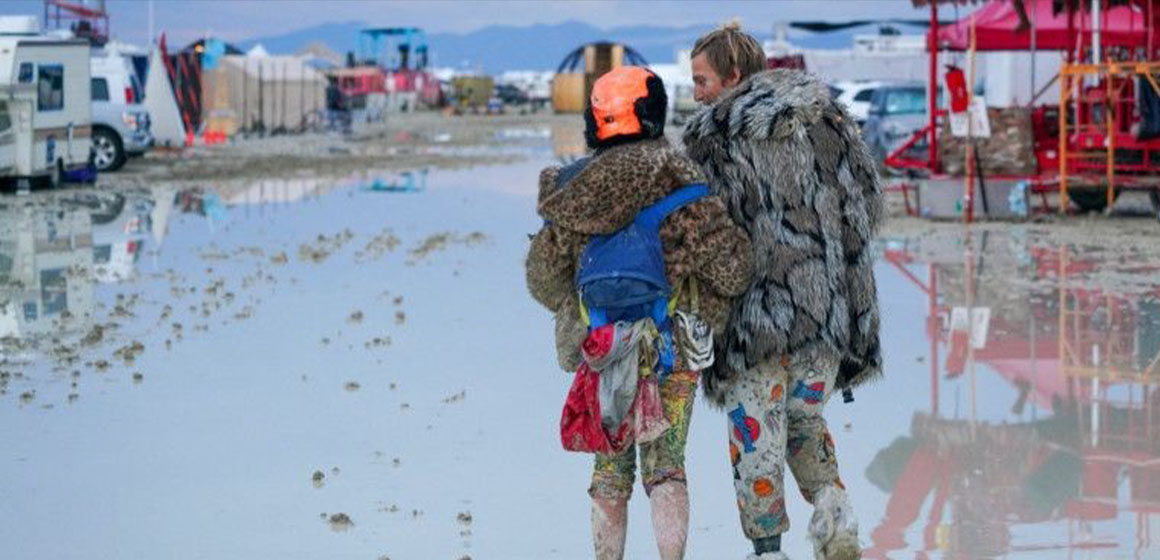In a turn of events, tens of thousands of festivalgoers found themselves stranded in the Nevada desert on Sunday as torrential rains transformed the annual Burning Man gathering into a muddy quagmire. Video footage captured the struggles of costumed attendees, known as “burners,” navigating the wet and mucky terrain, some fashioning makeshift boots out of trash bags. Numerous vehicles became trapped, their wheels buried deep in the sludge.
As a result of the severe weather, all scheduled events at the counterculture festival, which had attracted approximately 70,000 participants, were canceled. The downpour wreaked havoc on dance party structures, art installations, and other unconventional forms of entertainment. Road gates leading in and out of the Black Rock City venue were closed, prompting some desperate individuals to embark on grueling treks on foot for hours in search of the nearest road, hoping to hitch a ride out. The closest airport, located in Reno, required a three-hour drive.
Festival attendees were instructed to remain in place, conserve food and water, and brace themselves for further rain showers, with forecasts predicting additional downpours on Sunday. While law enforcement is investigating one death at the festival, it remains unclear whether it is related to the adverse weather conditions.
Christine Lee, a circus performer with dreadlocks, shared her experience on TikTok, emphasizing the challenges faced by attendees. She described the mud rendering her five-inch boots into stilts and relayed reports that people might remain stranded until Tuesday. Despite the circumstances, she assured that she and her companions had enough provisions to last a week, including ample supplies of tuna.
Sergeant Nathan Carmichael of the Pershing County Sheriff’s Office acknowledged the difficulties posed by the conditions, noting the mud’s adhesive nature, which hindered movement for both people and vehicles. Most motorhomes and RVs found themselves immobilized.
Organizers urged festivalgoers to conserve essential resources and seek shelter in warm and secure spaces, acknowledging that the festival’s expansive open-air esplanade, known as the “playa,” had become impassable. They encouraged attendees to support one another and introduced themselves as a means of fostering camaraderie.
Originally planned to conclude on Monday, the festival’s future remained uncertain as participants grappled with the ongoing mud crisis. Organizers provided a “2023 Wet Playa Survival Guide,” cautioning that only four-wheel drive vehicles equipped with all-terrain tires stood a chance of navigating the challenging conditions. For those unable to move their vehicles, a five-mile (eight-kilometer) walk to the nearest road was an option, with daytime bus transportation available to transport individuals to Reno.
Mobile cellphone trailers were deployed, and public access to the site’s wireless internet was granted to facilitate communication. Organizers assured the public that they had prepared extensively for such scenarios, conducting drills and prioritizing safety measures. Last year, the festival faced scorching heatwaves and strong winds, adding to its history of navigating unforeseen challenges.

